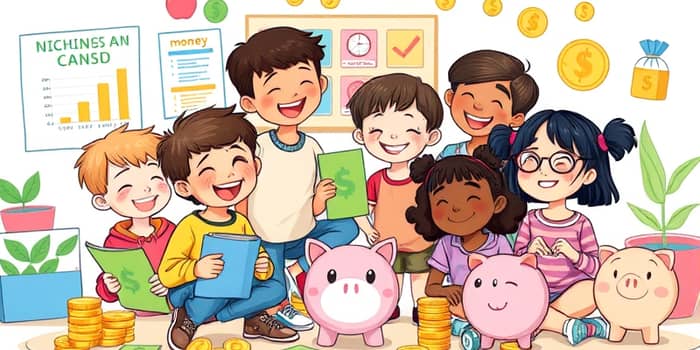
In today’s world, money touches every aspect of daily life, yet most children grow up without formal guidance on managing it. A survey by the American Bankers Association revealed that 87% of Americans believe basic financial concepts belong in school curricula, and 72% wish they’d learned earlier. Despite this demand, only 35 states currently require a personal finance course to graduate, and just 10 have fully implemented such programs. By equipping children with money skills during their formative years, parents and educators can lay the groundwork for responsible decision-making and long-term stability.
Neuroscience shows that habits formed in childhood often persist into adulthood. Introducing financial concepts at a young age nurtures financial confidence and prevents costly mistakes later on. Children who understand how to save, budget, and set goals are less likely to incur debt and more likely to pursue positive money habits.
Research indicates that most people learn money management at home: 38% cite family as their primary teacher, while only 15% credit school. For teenagers, the gap widens: 75% rely on parents, and just 52% learn about finance in class. Early intervention bridges this divide, ensuring that all children—regardless of background—gain the skills needed for long-term wealth.
Teaching kids about money involves more than handing them coins. It requires a structured approach covering four key areas:
By breaking these concepts into bite-sized lessons, children learn to apply them naturally. Reinforcing lessons with everyday examples—grocery shopping, birthday budgeting, or family vacations—makes abstract ideas tangible.
In the digital age, a wealth of tools exists to make learning about money both fun and interactive. Apps like Greenlight, RoosterMoney, and FamZoo offer child-friendly interfaces that track chores, allowances, and savings. They provide real-time feedback, encouraging kids to stay motivated.
Traditional resources remain invaluable. Books such as The Berenstain Bears’ Trouble with Money and Rich Dad Poor Dad for Teens introduce financial lessons through engaging narratives. Complement these with online videos and interactive websites that simulate real-world financial scenarios, building interactive learning tools into every lesson.
Implementing a financial curriculum at home or in school need not be daunting. Simple, consistent steps can yield significant results:
Regular family meetings to review budgets, discuss upcoming expenses, and celebrate financial milestones keep children engaged and accountable. In classrooms, project-based activities—such as running a mock store or managing a fundraising event—bring lessons to life.
Early financial education yields dividends that extend well beyond individual households. Children who master money fundamentals are less likely to accumulate high-interest debt, reducing financial strain in adulthood. They develop the discipline to save for emergencies, investments, and retirement, fostering an environment of sustainable financial well-being.
On a societal level, improved financial literacy can mitigate the widespread lack of money management skills. Currently, about 63% of Americans struggle with basic financial concepts. Addressing this gap early on translates into a population better equipped to handle economic challenges.
Furthermore, teaching financial literacy supports intergenerational wealth preservation. Studies show that 90% of wealthy families lose their wealth by the third generation without proper financial governance. Providing children with these skills helps break cycles of poor money management and secures a stronger economic future.
Empowering the next generation with financial wisdom is not merely a parental duty—it is a societal imperative. By integrating budgeting exercises, savings incentives, and engaging resources into everyday life, we can cultivate financially savvy young minds prepared for whatever economic challenges lie ahead. Whether you are a parent, teacher, or community leader, your commitment to children’s money education today will yield significant dividends for years to come.
References













